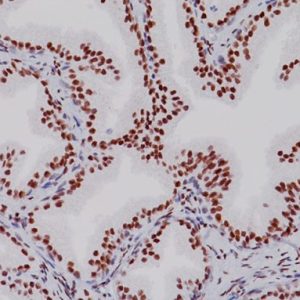Description
Helicobacter pylori are spiral-curved, gram-negative bacteria that is present on surface epithelium of the mucous layer of the stomach. Immunohistochemical techniques using a Helicobacter pylori antibody can distinguish it from other types of curved bacteria.There is evidence showing that these bacteria may play a significant role in peptic ulcer disease. A study has suggested that Helicobacter pylori infection is a risk factor for colorectal polyps in children. The small spiral-curved shaped bacterium can be seen clearly using a 100X oil objective under the microscope.z
SPECIFICATIONS
Specifications
| INTENDED USE | ASR (Q Series), IVD |
|---|---|
| SPECIES REACTIVITY | Human |
| SOURCE | Mouse Monoclonal |
| CLONE | BC7, Biocare Clone |
| ISOTYPE | IgG1 |
| ANTIGEN | Helicobacter pylori |
| LOCALIZATION | Spiral shaped bacterium |
| POSITIVE CONTROL | Stomach infected with H. pylori |
DATASHEETS & SDS
INTERNATIONAL
REFERENCES
1. Enomoto H, et al. Topographic distribution of Helicobacter pylori in the resected stomach. Eur J Gastroenterol Hepatol 1998 Jun;10(6):473-8.
2. Center for Disease Control Manual. Guide: Safety Management, NO. CDC-22, Atlanta, GA. April 30, 1976 “Decontamination of Laboratory Sink Drains to Remove Azide Salts.”
3. Clinical and Laboratory Standards Institute (CLSI). Protection of Laboratory Workers from Occupationally Acquired Infections; Approved guideline-Third Edition CLSI document M29-A3 Wayne, PA 2005.







Reviews
There are no reviews yet.